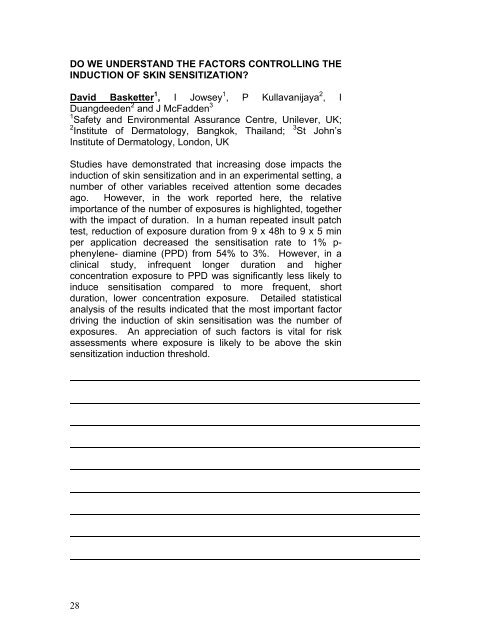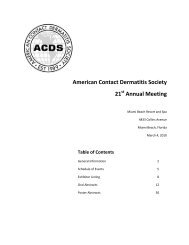2006 Abstracts - American Contact Dermatitis Society
2006 Abstracts - American Contact Dermatitis Society
2006 Abstracts - American Contact Dermatitis Society
- No tags were found...
Create successful ePaper yourself
Turn your PDF publications into a flip-book with our unique Google optimized e-Paper software.
DO WE UNDERSTAND THE FACTORS CONTROLLING THEINDUCTION OF SKIN SENSITIZATION?David Basketter 1 , I Jowsey 1 , P Kullavanijaya 2 , IDuangdeeden 2 and J McFadden 31 Safety and Environmental Assurance Centre, Unilever, UK;2 Institute of Dermatology, Bangkok, Thailand;3 St John’sInstitute of Dermatology, London, UKStudies have demonstrated that increasing dose impacts theinduction of skin sensitization and in an experimental setting, anumber of other variables received attention some decadesago. However, in the work reported here, the relativeimportance of the number of exposures is highlighted, togetherwith the impact of duration. In a human repeated insult patchtest, reduction of exposure duration from 9 x 48h to 9 x 5 minper application decreased the sensitisation rate to 1% p-phenylene- diamine (PPD) from 54% to 3%. However, in aclinical study, infrequent longer duration and higherconcentration exposure to PPD was significantly less likely toinduce sensitisation compared to more frequent, shortduration, lower concentration exposure. Detailed statisticalanalysis of the results indicated that the most important factordriving the induction of skin sensitisation was the number ofexposures. An appreciation of such factors is vital for riskassessments where exposure is likely to be above the skinsensitization induction threshold.28






